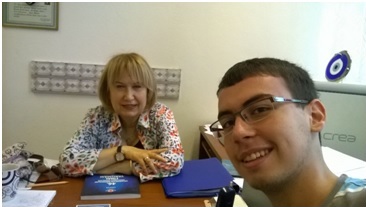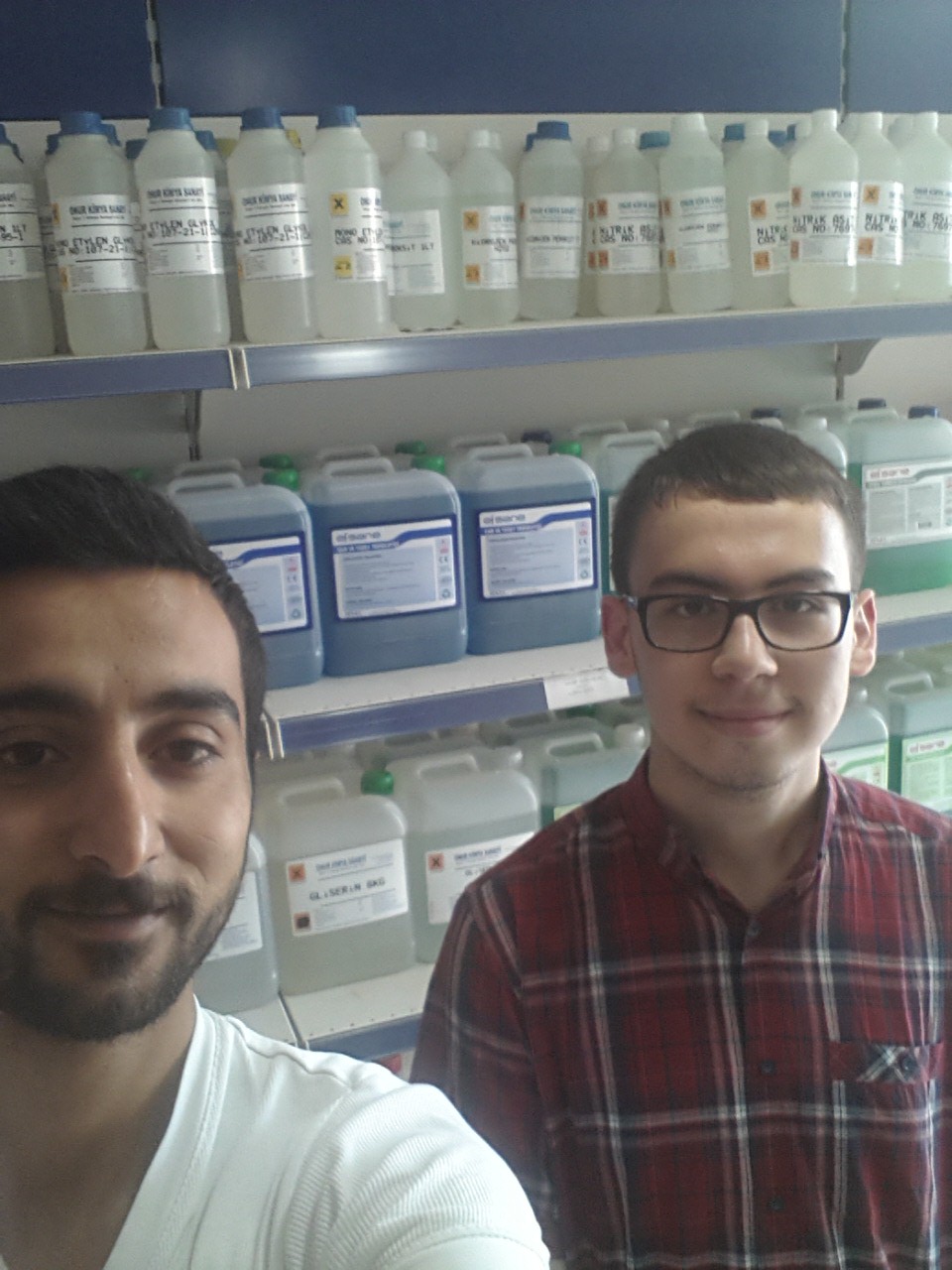Difference between revisions of "Team:AUC TURKEY/Practices"
| Line 1: | Line 1: | ||
{{AUC_TURKEY}} | {{AUC_TURKEY}} | ||
| − | |||
| − | |||
[[File:Adsız.jpg|thumb|right|350px|'''Figure 1''': Prof. Dr. Nilüfer Aksöz]] | [[File:Adsız.jpg|thumb|right|350px|'''Figure 1''': Prof. Dr. Nilüfer Aksöz]] | ||
Revision as of 17:55, 30 August 2015

We discussed the application of our project with the Head of the Department of Biotechnology of Hacettepe University, Prof. Dr. Nilüfer Aksöz. Talks on how the project could be applied in real life and how it could be turned into a product were carried out. The talks were focused on the efficiency of such an application. Abrupt calculations for the scale of effectivity were conducted. Mrs. Aksöz suggested to implant sensors such as turbidostat and chemostat in host tanks to maximize efficiency.
The discussed and developed scheme for a future product can be listed as below.
- The bacteria will be cultivated in a bacterial fermenter.
- The products formed as a result of the breakdown of the substrates (urea and hydrogen peroxide) should be effectively dispensed to prevent end-product inhibition of the enzymes.
- The urea and hydrogen peroxide will be transferred to the fermenter as a flow rate adjusted substrate.
- The products of the chemical breakdown (NH3 and H+) will cause a significant decrease in the pH of the medium leading to a decrease in enzymatic activity and the decline in the bacterial concentration of the medium. To counteract the change in pH, buffer solutions(such as the common bicarbonate) will be used. The use buffer solutions are already widespread and cost-effective due to the extensive usage in related industries.
- The following will be installed to the fermenter:
- A Chemostat Sensor to adjust the flow rate of the substrate in respect to the substrate concentration of the medium
- To adjust the flow rate of LB Broth to the medium in respect to the microorganism concentration through:
- Turbidostat Sensor
- Photocell (Alternative)
- A major issue for the fermenter is the formation of biofilm on the device surface. To counteract this, chemicals that negate quorum sensing in the bacterial population should be used; if not, occasional scraping of the device surface may be necessary.
- Due to the Pasteur Effect, the activity of aerobic bacteria will be significantly higher in contrast to anaerobic bacteria. Therefore, the bacterial medium should be supplied with air. The inward airflow to the fermenter will most likely trigger bacterial foaming, which is a major handicap for the efficiency of the system. Sodium dodecyl sulfate, or other surface inactive agents should be manipulated to combat any foaming in the medium.
- The efficiency of the fermenter should be calculated and analyzed for the applicability of such a device. The fuels and devices that are currently being used should be contrasted with the device in design to deduce if the system is worth it. The main points in the analysis should be efficiency and affectivity.
- According to the results of the research, the size and the scale of the device, and its range of effect should be determined.
- The safety measures required to prevent contamination of the environment should be designated and applied to the fermenter to prevent a worldwide plague!
- Cooperation with specialists in respective fields, such as Electronics and Industrial Engineers, should be consulted to manipulate the experience of such specialists in the product.
We met Sadrettin Başalan, an official of Onur Kimya. We had a short meeting with him on our project.He listened to our project, very much intrigued. He also assisted us in the acquiring of the chemicals we use in our project, by also providing the necessary information for their usage. We thank Sadrettin Başalan and Onur Kimya.
We came together with Mr. Yusuf Durmuş, an Expert of Entomology at the Hacettepe University. We explained how we had adopted the catalase of the Bombardier Beetle for our project. He had suggestions on how the metabolic systems of other insects could be utilized for our project and possible future projects. He also elaborated on the future application of the project.














